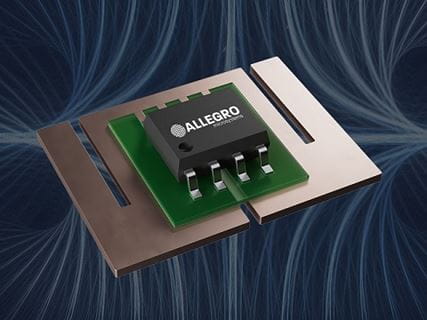How Does XtremeSense™ TMR Technology Enable Efficient Applications

In today’s semiconductor industry, we assuredly notice a growing demand for enhanced efficiency across various industrial and automotive sectors, prompting significant shifts in design considerations, particularly regarding current sensing requirements. If you’re reading this, you’re very likely part of a contingent of designers seeking higher-efficiency solutions as your systems become more complex and demand solutions that can handle increased power, especially as electrification becomes even more of a part of our daily lives in large-scale applications. A major point of discussion amongst designers is how the increase in the volume of such demands suggests that existing magnetic-based solutions may face obsolescence by 2030, due to evolving needs. Modern applications require more capable solutions such as wide band gap (WBG) power devices pushing the performance requirements for current sensing.
How WBG TMR solutions overcome the challenges designers face daily
As highlighted by EE Times Europe, “WBG SiC and GaN materials enable significant efficiency improvements in applications such as traction inverters for SiC and adapters/chargers for GaN. SiC and GaN technologies have grown enormously over the past few years, proving to be commercially available energy-saving technologies.”
Wide band gap components offer smaller, faster, and more reliable power electronic solutions with superior efficiency compared to traditional silicon-based alternatives. Critical sectors such as electric vehicles (EVs), renewable energy, and overall power efficiency increasingly require more precise, higher-bandwidth current sensors. While Hall-based solutions were once almost standard, we are now witnessing a shift in focus towards advancements like Tunnel Magnetoresistance (TMR) technology, as designers are drawn to its benefits.
Why might you want to consider TMR solutions for your designs?
The answer is multifaceted. TMR's advantages over shunt resistors and Hall-effect-based sensing solutions include lower power consumption, better thermal stability, improved resolution, and higher sensitivity. Industrial applications' increasing demand for sensitivity is anticipated to drive the adoption of Giant Magneto Resistance (GMR) or TMR sensors, with a focus on addressing evolving needs and, undoubtedly, new regulations.
However, it is obvious today’s designers are discerning. They aren’t going to choose solutions that offer just another average performance. If you’re looking for a new solution that not only satisfies today’s demands but has enough potential to handle the unexpected twists of tomorrow, then TMR solutions may be just what is needed. TMR sensors excel where high bandwidth, accuracy, and long-term performance are paramount to success. Notably, Allegro MicroSystems’ XtremeSense™ TMR sensor solutions, leveraging Back-End-of-Line (BEOL) compatibility, offer a compelling alternative. As the saying goes, the little things matter, especially when designing for space constraints, and XtremeSense™ certainly fits the bill. These sensors, residing within BEOL layers, afford a larger sensing area while maintaining a compact die size, building upon the strengths of Hall sensors.
TMR sensors' superior Signal-to-Noise Ratio (SNR) enables the detection of minute magnetic field variations with remarkable precision, enhancing applications' sensing capabilities. Furthermore, their wider dynamic range facilitates high-resolution magnetic field measurements, coupled with enhanced stability over temperature variations. Especially as consumers want to push their EVs into harsher environments for longer periods, the ability of TMR to keep things stable and running smoothly no matter what is thrown its way, is an advantage.
The Common Mode Field Rejection (CMFR) capability of Allegro’s XtremeSense TMR solutions, reaching up to –54 dB, addresses the detrimental effects of stray magnetic fields induced by adjacent conductors or magnets, thereby minimizing system inefficiencies. Leveraging standard CMOS manufacturing processes, alongside smaller die sizes and reduced test times, Allegro MicroSystems has narrowed the cost gap with Hall-based sensors while delivering superior performance.
Real products with real results
Allegro MicroSystems’ CT43x and CT45x sensors exemplify this advancement, tailored for EV applications with features such as high bandwidth (1 MHz), overcurrent fault detection, and immunity to Common Mode Fields (CMFR: –54dB). Notably, Suncall Corporation's adoption of Allegro’s TMR Sensors for their electric vehicle products underscores the tangible benefits in terms of accuracy, low power consumption, and overall efficiency.
In conclusion, Allegro MicroSystems’ TMR technology is a pivotal advancement, offering technically superior performance at competitive pricing. As high-end applications demand increasingly sophisticated solutions, TMR technology is positioned to become a standard for future innovations, complementing the strengths of existing Hall sensors. For more details on how to optimize your systems using Allegro’s XtremeSense TMR technology, take a look at our recent whitepaper.
